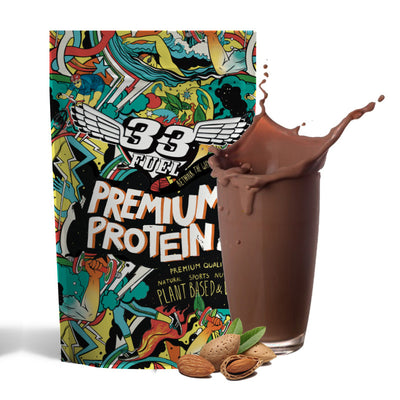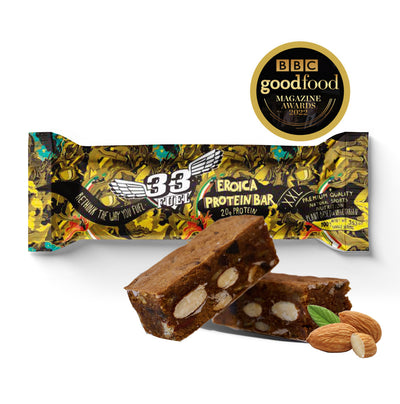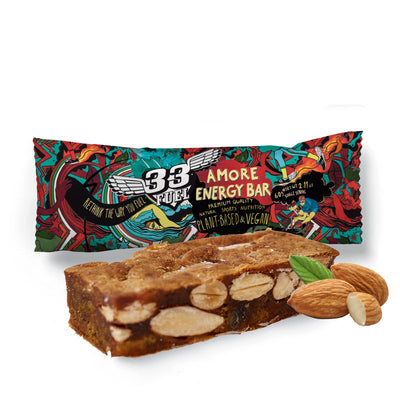Why a strong core could be your weak link

Endurance athletes are forever told that developing ‘strong core’ muscles will make them more robust, allowing them to train more consistently and produce better results. But today’s cautionary blog explains how that’s a bit of an oversimplification...
First, the prologue. This blog is written from painful experience and is being typed at a standing desk with a large emerging bruise running from my inner thigh to abdomen, a painful distended belly, and a dull ache in my lower back.
What happened?
I ripped my psoas major (a deep-lying, rope-like core muscle) when changing direction while sprinting… and it felt like being sawn in two with a rusty bike chain.
The point of this overly-graphic tale is that the psoas didn’t quit because it was ‘weak’ in a floppy, powerless sense, but because it was too short, and far too tight, and had - frankly - had enough.
Why did this happen?
The psoas major’s function is to flex the thigh, so it’s used a lot when running. It also resides in a contracted, shortened position when sat in front of a laptop. I’ve done rather a lot of both activities over the years, but comparatively little to counteract their effects.

"Like being sawn in two with a rusty bike chain..." Author Tim shows off his bruise*. Remember kids, you reap what you psoas. This may be the only physiotherapy joke ever (Confused? ’psoas’ is pronouced ‘sow-as’... Sorry)
My cautionary tale highlights the fact the definition of a ‘strong core’ doesn’t just mean powerful, it also needs to mean supple. Which in turn means ‘being in balance with the whole body, of optimal length, and free from adhesions to provide a good range of motion’.
That’s a mouthful, but makes the point - it’s a far more holistic definition of strength we’re after here.
The second problem with the term ‘strong core’ is what actually defines ‘core’ anyway.
Take the hip flexor component (the psoas major is a hip flexor) for starters. This alone has nine complementary muscles that need to balance with the four extensors muscles of the hamstrings and glutes.
As for the core as a whole?
There are as many as 35 different muscle groups connecting spine to pelvis to hip. These allow you to flex and extend, externally and internally rotate, abduct and adduct.
If this is all getting a little complex, fear not.
What really matters is the human body is designed to move every which way, not sit still for hours at a desk, and this needs bearing in mind when going in search of upgraded performance.
How do we make sure a strong core is a supple core?
We can quickly see how it gets tricky to make sure we’re working the core muscles we need to, while also ‘creating much-needed space’ (let’s not call it stretching) in the ones that are too tense.
Expert guidance can help and it’s partly why yoga and pilates have such a devoted following in an increasingly sedentary world.
But before we look at some dedicated psoas stretches (that will be useful in my rehab, and your quest to avoid replicating my current purple patch and attractive hobble), it’s also worth being more mindful of our movement patterns - or lack of them - on a daily basis.
For example, if you're a cyclist with an office job who occasionally hits the gym to do crunches until you feel the burn, then your hips are consistently in a flexed position - and you’re spending minimal time extending them. The flexors, (such as the psoas), tighten and shorten.
Given this will be a common scenario for most endurance athletes, we’ve asked Rachel Stephenson, a certified Pilates instructor and co-founder of Inhouseworkout.com for four simple exercises that will safely work the psoas while building a strong, supple, and balanced core for endurance sports.
Psoas exercise 1: passive stretch with a foam roller

Rachel: “place the foam roller under the pelvis and hug one knee as close to the chest as possible, but don’t let the back arch or the pelvis tip forward. Aim to keep the lower back as close to the floor as possible and you should feel a stretch in the front of the thigh.”
Psoas exercise 2: bridge

Rachel: “peel the spine up into a bridge, retaining a posterior tilt in your pelvis to stretch the psoas and release the back - a tight psoas will encourage an anterior tilt and will shorten and overwork the lower back.
“A tip is to narrow the base of the pelvis (sit bones) and point your tailbone to the back of your knees. Maintain this as you raise and lower your pelvis.
“To increase the stretch, straighten one leg and draw an imaginary line down the wall in front with your foot. This will further open the hip, but be careful not to tilt the pelvis forward and arch the back”
Psoas exercise 3: kneeling psoas stretch

Rachel: “again make sure the pelvis is tilted posteriorly (tailbone to back of knees) and reach the arm to the ceiling. This will also give you a lateral stretch, which can be increased by leaning in slightly."
Psoas exercise 4: Back extension with hip stretch

Rachel: “as with the kneeling psoas stretch, tilt the pelvis posteriorly. Bring the pubic bone closer to the mat and press the foot away into your hand.”
Happy core work folks!
And remember, while you’re looking after your performance from the outside with all this core exercise, look after it from the inside with great food and fuel. An awesome daily diet keeps you covered most of the time, while 33Fuel’s Pre and Post Workout Shakes deliver the nutrition upgrade needed to recover like a boss from your biggest training sessions and race days.
*For those thinking "that bruise is nowhere near the psoas", a note to say that gravity has taken hold and that's where the internal bleeding has pooled. We could reveal bruising further up - and other core muscles are also affected - but we want to keep the blog digestible, and not put you off your post-workout 33Fuel!
More performance-boosting content
From the 33Fuel Podcast
From the 33Fuel Vlog
Related content
Why 99% of runners underperform and how to join the 1% who get it right
How to taper for a marathon, ultramarathon or Ironman
The best diet for endurance athletes
Diet and mental health - the mood food connection







